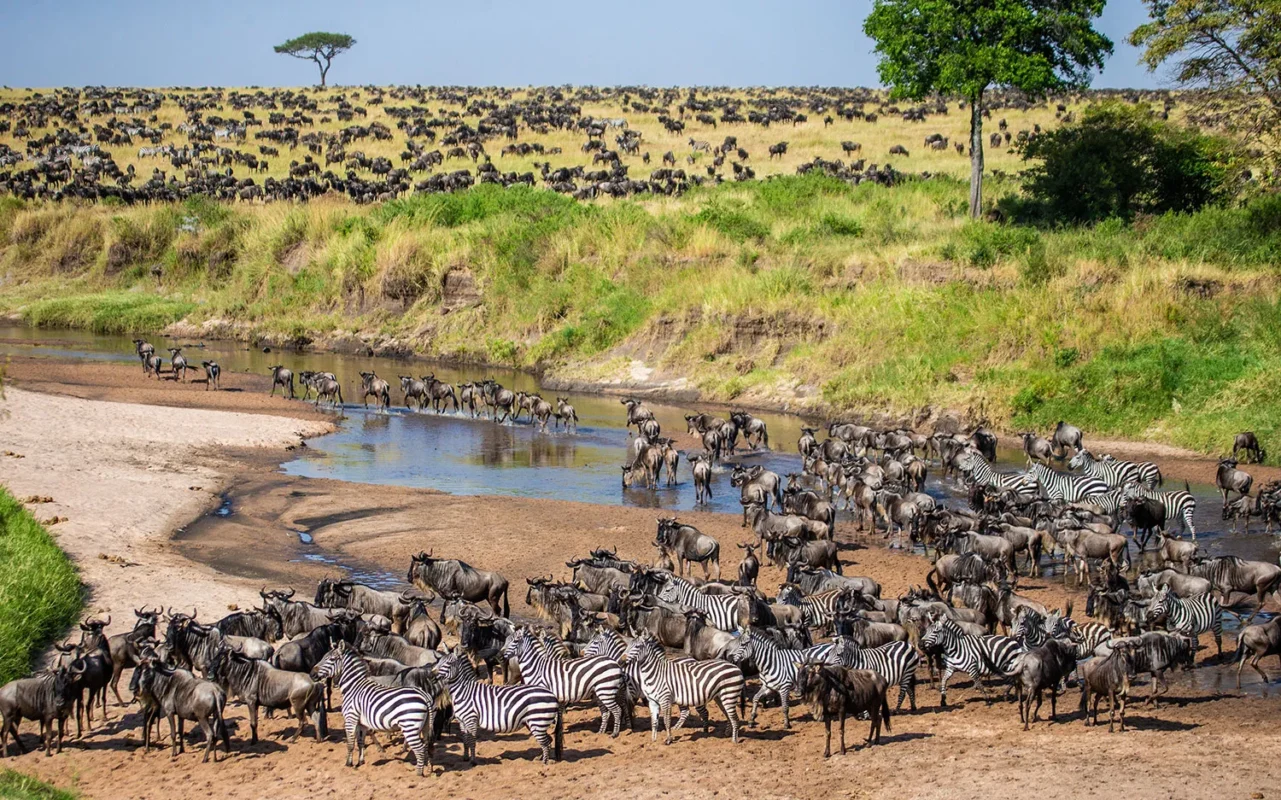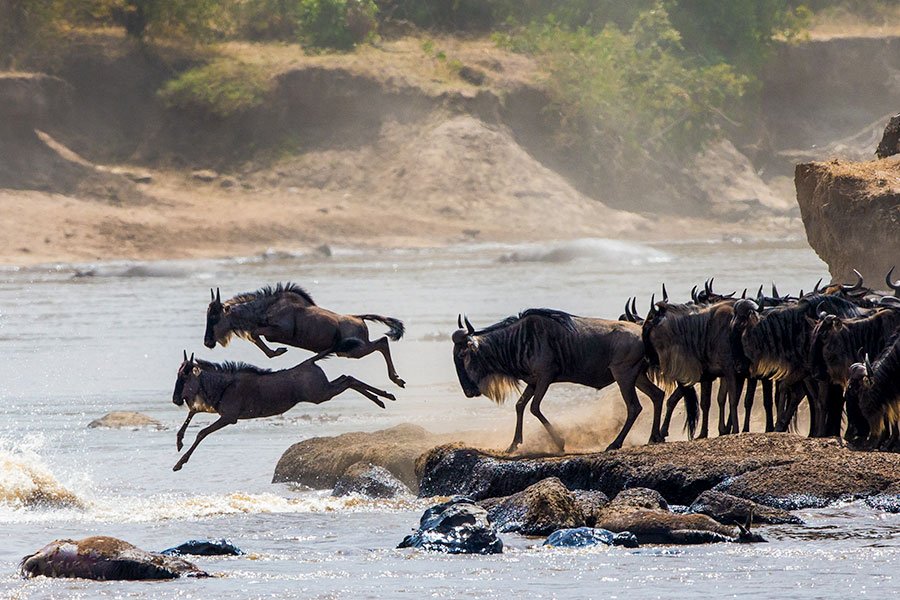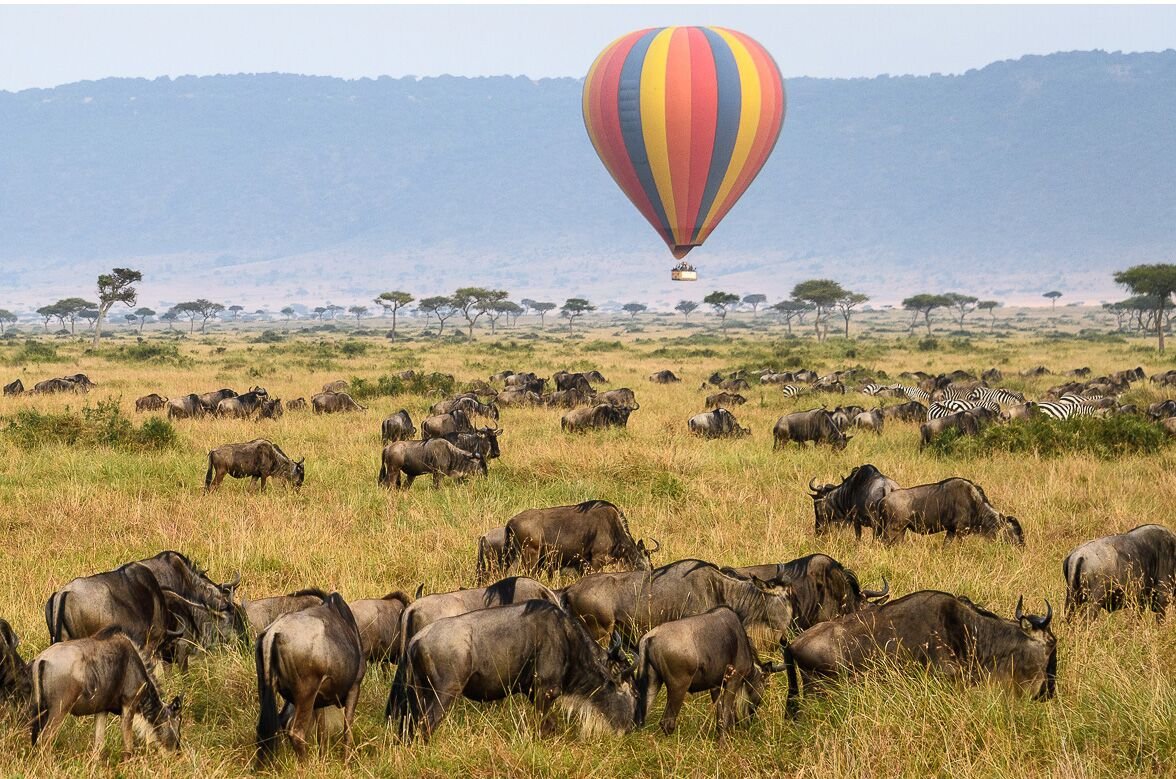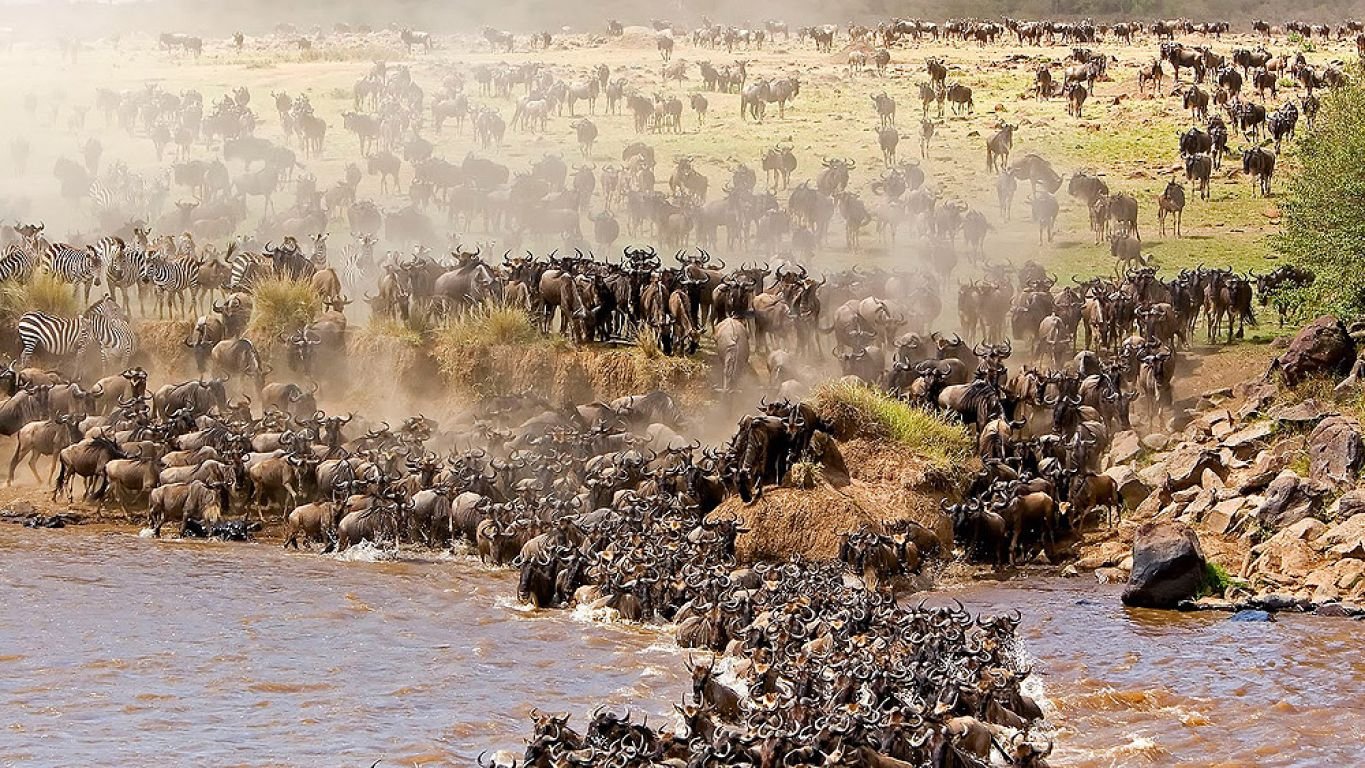Wildebeests, also known as gnus, are iconic inhabitants of the African savannah, particularly within the Serengeti ecosystem. These majestic creatures are best known for their role in the Great Migration, where millions of wildebeests traverse the plains in search of fresh grazing lands. Understanding what wilde beests eat is crucial to grasping their biology and behavior.
Wildebeests are herbivores, primarily grazing on grasses, but their diet can vary based on the availability of food resources. Over 1.5 million wildebeests migrate annually between the Serengeti in Tanzania and the Maasai Mara in Kenya.
Wildebeests exhibit unique grazing patterns that are influenced by their social structure, the availability of food, and environmental factors. Understanding these patterns provides insight into their role within the Serengeti ecosystem.
Wildebeests play a crucial role in maintaining the health of the Serengeti ecosystem. Their grazing habits have several positive effects on the environment, promoting biodiversity and influencing the distribution of other species.
Illegal hunting and poaching pose significant threats to wildebeest populations. Conservation efforts focused on anti-poaching initiatives are essential to protect these animals. Climate change poses a long-term threat to the Serengeti ecosystem.
As we continue to face challenges such as habitat loss, poaching, and climate change, it’s crucial to support conservation efforts aimed at protecting wildebeests and their habitats. By ensuring their survival, we preserve the rich biodiversity and natural beauty of the Serengeti for future generations to enjoy.
17 Oct
Wildebeests, also known as gnus, are iconic inhabitants of the African savannah, particularly within the Serengeti ecosystem. What Do Wildebeest Eat? These majestic creatures are best known for their role in the Great Migration, where millions of wildebeests traverse the plains in search of fresh grazing lands. Understanding what wildebeests eat is crucial not only to grasping their biology and behavior but also to appreciating the delicate balance of the Serengeti ecosystem they inhabit.
In this article, we will delve into the dietary habits of wildebeests, their role in the Serengeti’s food web, and how their grazing patterns affect the landscape. We’ll also explore the nutritional needs of these migratory giants and the seasonal variations in their diet. By the end, you’ll have a deeper understanding of these fascinating animals and the critical role they play in the Serengeti.
1. Overview of Wildebeests
Wildebeests belong to the Bovidae family and are closely related to antelopes. There are two main species: the blue wildebeest and the black wildebeest. Blue wildebeests are more commonly found in the Serengeti and are easily recognized by their curved horns and shaggy manes. These animals typically weigh between 400 to 600 pounds (180 to 270 kg) and can stand about 4 to 5 feet (1.2 to 1.5 meters) tall at the shoulder.
1.1 Social Structure
Wildebeests are social animals that live in large herds, often consisting of thousands of individuals. These herds are usually composed of females and their young, while males often form bachelor groups. The herds are highly dynamic, constantly on the move as they search for fresh grazing areas and water sources.
1.2 The Great Migration
The Great Migration is one of nature’s most breathtaking spectacles, with over 1.5 million wildebeests migrating annually between the Serengeti in Tanzania and the Maasai Mara in Kenya. This epic journey is driven primarily by the search for food and water, and it follows a predictable route influenced by the seasonal rains and the availability of grazing land.
 What Do Wildebeest Eat?
What Do Wildebeest Eat?
2. Diet of Wildebeests
Wildebeests are herbivores, primarily grazing on grasses, but their diet can vary based on the availability of food resources throughout the year. Their feeding habits are closely tied to the seasons and the movement of their herds.
2.1 Types of Food
2.1.1 Grasses
Wildebeests are particularly fond of short grasses that sprout after the rains. These grasses are nutritious and easier to digest than longer, more fibrous options. The primary grass species that wildebeests consume include:
- Spear grass (Heteropogon contortus): A favorite among wildebeests, this grass provides essential nutrients during the dry season.
- Red oat grass (Themeda triandra): This grass is common in the Serengeti and is a crucial food source, especially during the migration.
- Buffalo grass (Bouteloua dactyloides): Known for its drought resistance, buffalo grass is consumed by wildebeests in areas with limited water.
2.1.2 Browse
While wildebeests primarily graze, they may also consume browse (leaves, stems, and fruits of shrubs and trees) when grass is scarce. This behavior typically occurs in the dry season or in areas where grasslands have been depleted.
2.2 Nutritional Needs
Wildebeests require a balanced diet to support their energy needs, especially during the strenuous migrations. Their diet is rich in carbohydrates, proteins, and minerals, which are essential for maintaining their health and reproductive success.
2.2.1 Protein
Protein is vital for growth, reproduction, and overall health. Wildebeests derive protein from the grasses they consume, particularly during the lush green season. Young, tender shoots are especially high in protein, making them a preferred food source.
2.2.2 Minerals and Water
Wildebeests need adequate minerals, such as calcium and phosphorus, which they obtain through the grasses they eat. Access to fresh water is also critical, especially during the dry season when water sources become scarce. Wildebeests can travel long distances to find water, which is essential for their survival.
3. Grazing Patterns
Wildebeests exhibit unique grazing patterns that are influenced by their social structure, the availability of food, and environmental factors. Understanding these patterns provides insight into their role within the Serengeti ecosystem.
3.1 Herd Dynamics
Within a herd, wildebeests often graze in groups, which allows them to maximize their foraging efficiency. Younger and more vulnerable individuals typically stay in the center of the herd for protection against predators. This social structure enhances the herd’s survival and ensures that all members have access to food.
3.2 Seasonal Grazing
The Serengeti experiences distinct wet and dry seasons, which significantly affect wildebeest grazing habits. During the wet season (November to May), the landscape is lush with fresh grasses, allowing wildebeests to feed on nutrient-rich pastures. In contrast, during the dry season (June to October), grazing becomes more challenging, prompting the herds to migrate in search of greener pastures.
3.2.1 Wet Season Grazing
During the wet season, wildebeests spread out across the plains, taking advantage of the abundant food sources. This period is crucial for their reproduction, as it coincides with calving season. The abundance of food ensures that mothers can provide adequate nutrition to their young.
3.2.2 Dry Season Migration
As the dry season sets in, grasses become sparse, and the herds begin their migration northward to the Maasai Mara. This journey is fraught with challenges, as wildebeests must navigate through predator-rich areas and cross rivers. Their ability to find food and water during this time is critical for their survival.
 What Do Wildebeest Eat?
What Do Wildebeest Eat?
4. Impact on the Serengeti Ecosystem
Wildebeests play a crucial role in maintaining the health of the Serengeti ecosystem. Their grazing habits have several positive effects on the environment, promoting biodiversity and influencing the distribution of other species.
4.1 Grazing Pressure
By consuming grasses, wildebeests help control vegetation growth, preventing overgrowth and allowing other plant species to thrive. This grazing pressure contributes to a balanced ecosystem, fostering diverse habitats that support a variety of wildlife.
4.2 Nutrient Cycling
What Do Wildebeest Eat? As wildebeests graze, they also contribute to nutrient cycling within the Serengeti. Their droppings enrich the soil, promoting plant growth and providing essential nutrients for other herbivores. This process enhances the overall health of the ecosystem, ensuring that it can sustain a diverse range of species.
4.3 Supporting Predator Populations
What Do Wildebeest Eat? Wildebeests are a primary prey species for many predators, including lions, hyenas, and crocodiles. Their presence in the ecosystem supports healthy predator populations, creating a balanced food web. The relationship between wildebeests and their predators is a fundamental aspect of the Serengeti’s ecological dynamics.
5. Conservation Challenges
Despite their ecological importance, wildebeests face several conservation challenges that threaten their populations and the ecosystems they inhabit.
5.1 Habitat Loss
What Do Wildebeest Eat? As human populations expand and agricultural practices increase, wildebeest habitats are being lost. This encroachment disrupts migration routes and limits access to grazing areas and water sources. Protecting their natural habitats is crucial for the survival of these migratory giants.
5.2 Poaching and Hunting
Illegal hunting and poaching pose significant threats to wildebeest populations. As demand for bushmeat increases, wildebeests become targets, jeopardizing their numbers. Conservation efforts focused on anti-poaching initiatives are essential to protect these animals.
5.3 Climate Change
Climate change poses a long-term threat to the Serengeti ecosystem, affecting rainfall patterns and grazing conditions. Changes in climate can lead to droughts or flooding, disrupting the delicate balance that wildebeests depend on for survival.
6. Conservation Efforts
Efforts to conserve wildebeests and their habitats are ongoing, with various organizations working to protect these iconic animals and their ecosystems.
6.1 Protected Areas
The Serengeti National Park and neighboring conservation areas play a vital role in safeguarding wildebeests. These protected areas provide a refuge for wildebeests and other wildlife, ensuring their survival in a rapidly changing world.
6.2 Community Engagement
Involving local communities in conservation efforts is essential for long-term success. Programs that promote sustainable practices and educate communities about the importance of wildlife conservation can help mitigate human-wildlife conflict and foster coexistence.
6.3 Research and Monitoring
Ongoing research and monitoring of wildebeest populations are critical for understanding their behavior and ecology. This information can inform conservation strategies and help ensure that efforts are tailored to the specific needs of these animals.
What Do Wildebeest Eat?
Conclusion
Wildebeests are remarkable creatures that play an essential role in the Serengeti ecosystem. Their grazing habits not only support their survival but also contribute to the health of the environment they inhabit. Understanding what wildebeests eat and how they interact with their surroundings provides valuable insights into the intricate web of life in the Serengeti.
As we continue to face challenges such as habitat loss, poaching, and climate change, it’s crucial to support conservation efforts aimed at protecting wildebeests and their habitats. By ensuring their survival, we preserve the rich biodiversity and natural beauty of the Serengeti for future generations to enjoy.
Whether you are planning a safari or simply interested in wildlife, knowing more about these migratory giants enhances our appreciation for the intricate balance of nature and the vital role each species plays in the ecosystem. The wildebeests’ journey is not just a spectacle of nature; it is a reminder of the importance of conservation and the interconnectedness of all living beings in the Serengeti.


